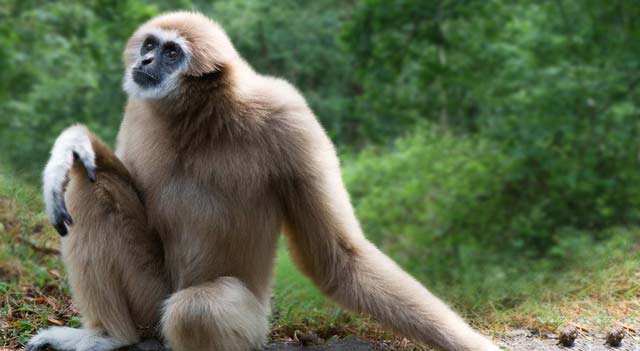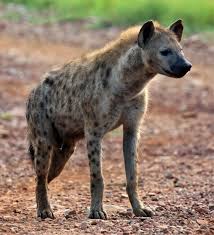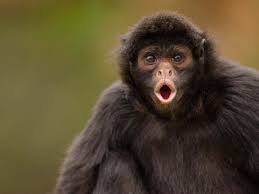Mini Sheet: Mammals - se-tenant (Ajman 1973)
Mammals - se-tenant (Ajman 1973)
31 March (Ajman ) within release Mammals, large format goes into circulation Mini Sheet Mammals - se-tenant face value 16*1 United Arab Emirates riyal
| Mini Sheet Mammals - se-tenant in catalogues | |
|---|---|
| Michel: | Mi: AJ 2685B-2700BKB |
| Colnect codes: | Col: AJ 1973.03.31-18 |
Mini Sheet is horizontal format.
Also in the issue Mammals, large format:
- Stamp - Antilope face value 1;
- Stamp - Monkeys face value 1;
- Stamp - Rodent face value 1;
- Stamp - Monkeys face value 1;
- Souvenir Sheet - Animal face value 1;
- Souvenir Sheet - Animal face value 1;
- Souvenir Sheet - African Elephant (Loxodonta africana) face value 1;
- Souvenir Sheet - Antilope face value 1;
- Souvenir Sheet - Animal face value 1;
- Souvenir Sheet - Monkeys face value 1;
- Souvenir Sheet - Animal face value 1;
- Souvenir Sheet - Monkeys face value 1;
- Souvenir Sheet - Leopard (Panthera pardus) face value 1;
- Souvenir Sheet - Leopard (Panthera pardus) face value 1;
- Stamp - Animal face value 1;
- Souvenir Sheet - African Elephant (Loxodonta africana) face value 1;
- Souvenir Sheet - Monkeys face value 1;
- Souvenir Sheet - African Elephant (Loxodonta africana) face value 1;
- Souvenir Sheet - Animal face value 1;
- Souvenir Sheet - Animal face value 1;
- Souvenir Sheet - Animal face value 1;
- Souvenir Sheet - Roan Antelope (Hippotragus equinus) face value 1;
- Souvenir Sheet - Night Mammal face value 1;
- Souvenir Sheet - Animal face value 1;
- Souvenir Sheet - Animal face value 1;
- Souvenir Sheet - Night Mammal face value 1;
- Souvenir Sheet - Monkeys face value 1;
- Souvenir Sheet - Monkeys face value 1;
- Souvenir Sheet - Antilope face value 1;
- Stamp - Ciervo face value 1;
- Stamp - Monkey face value 1;
- Souvenir Sheet - Bisons face value 1;
- Souvenir Sheet - Kangaroo (Macropus spp.) face value 1;
- Souvenir Sheet - Rodent face value 1;
- Souvenir Sheet - Rodent face value 1;
- Stamp - African Elephant (Loxodonta africana) face value 1;
- Stamp - African Elephant (Loxodonta africana) face value 1;
- Souvenir Sheet - Roan Antelope (Hippotragus equinus) face value 1;
- Souvenir Sheet - Animal face value 1;
- Souvenir Sheet - Brazilian Porcupine (Coendou prehensilis) face value 1;
- Souvenir Sheet - Diana Monkey (Cercopithecus diana) face value 1;
- Souvenir Sheet - Squirrel Monkey (Saimiri sciurus) face value 1;
- Souvenir Sheet - African Elephant (Loxodonta africana) face value 1;
- Stamp - Agouti (Dasyprocta sp.) face value 1;
- Stamp - Animal face value 1;
- Souvenir Sheet - Animal face value 1;
- Stamp - Brazilian Porcupine (Coendou prehensilis) face value 1;
- Souvenir Sheet - Brazilian Porcupine (Coendou prehensilis) face value 1;
- Stamp - Bushbaby (Family: Galagidae) face value 1;
- Stamp - Diana Monkey (Cercopithecus diana) face value 1;
- Souvenir Sheet - Diana Monkey (Cercopithecus diana) face value 1;
- Stamp - Edible Dormouse (Glis glis) face value 1;
- Stamp - Gazelle face value 1;
- Stamp - Impala (Aepyceros melampus) face value 1;
- Souvenir Sheet - Impala (Aepyceros melampus) face value 1;
- Stamp - Japanese Macaque (Macaca fuscata) face value 1;
- Souvenir Sheet - Japanese Macaque (Macaca fuscata) face value 1;
- Stamp - Leopard (Panthera pardus) face value 1;
- Mini Sheet - Mammals - se-tenant face value 16*1;
- Stamp - Monkey face value 1;
- Souvenir Sheet - Monkey face value 1;
- Stamp - Roan Antelope (Hippotragus equinus) face value 1;
- Souvenir Sheet - Roan Antelope (Hippotragus equinus) face value 1;
- Stamp - Spotted Hyaena (Crocuta crocuta) face value 1;
- Stamp - Squirrel Monkey (Saimiri sciurus) face value 1;
- Souvenir Sheet - Squirrel Monkey (Saimiri sciurus) face value 1;
- Souvenir Sheet - Night Mammal face value 1;
- Souvenir Sheet - Spotted Hyaena (Crocuta crocuta) face value 1;
Mini Sheet Mammals - se-tenant it reflects the thematic directions:
Animals are multicellular, eukaryotic organisms of the kingdom Animalia (also called Metazoa). All animals are motile, meaning they can move spontaneously and independently, at some point in their lives. Their body plan eventually becomes fixed as they develop, although some undergo a process of metamorphosis later on in their lives. All animals are heterotrophs: they must ingest other organisms or their products for sustenance.
The term antelope refers to numerous extant or recently extinct species of the ruminant artiodactyl family Bovidae that are indigenous to most of Africa, India, the Middle East, Central Asia, and a small area of Eastern Europe. Antelopes do not form a monophyletic group, as some antelopes are more closely related to other bovid groups, like bovines, goats, and sheep, than to other antelopes.
A better definition, also known as the "true antelopes", includes only the genera Gazella, Nanger, Eudorcas, and Antilope. One North American mammal, the pronghorn or "pronghorn antelope", is colloquially referred to as the "American antelope", despite the fact that it belongs to a completely different family (Antilocapridae) than the true Old-World antelopes; pronghorn are the sole extant member of an extinct prehistoric lineage that once included many unique species.
Apes (collectively Hominoidea /hɒmɪˈnɔɪdi.ə/) are a clade of Old World simians native to sub-Saharan Africa and Southeast Asia (though they were more widespread in Africa, most of Asia, and Europe in prehistory), which together with its sister group Cercopithecidae form the catarrhine clade, cladistically making them monkeys. Apes do not have tails due to a mutation of the TBXT gene. In traditional and non-scientific use, the term ape can include tailless primates taxonomically considered Cercopithecidae (such as the Barbary ape and black ape), and is thus not equivalent to the scientific taxon Hominoidea. There are two extant branches of the superfamily Hominoidea: the gibbons, or lesser apes; and the hominids, or great apes.
Elephants are the largest living land animals. Three living species are currently recognised: the African bush elephant (Loxodonta africana), the African forest elephant (L. cyclotis), and the Asian elephant (Elephas maximus). They are the only surviving members of the family Elephantidae and the order Proboscidea; extinct relatives include mammoths and mastodons.
Hyenas or hyaenas (/haɪˈiːnəz/ hi-EE-nəz; from Ancient Greek ὕαινα, hýaina)are feliform carnivoran mammals belonging to the family Hyaenidae /haɪˈɛnɪdiː/. With just four extant species (each in its own genus), it is the fourth-smallest family in the order Carnivora and one of the smallest in the class Mammalia. Despite their low diversity, hyenas are unique and vital components of most African ecosystems
Mammals are any vertebrates within the class Mammalia (/məˈmeɪli.ə/ from Latin mamma "breast"), a clade of endothermic amniotes distinguished from reptiles (including birds) by the possession of a neocortex (a region of the brain), hair, three middle ear bones and mammary glands. All female mammals nurse their young with milk, secreted from the mammary glands. Mammals include the largest animals on the planet, the great whales. The basic body type is a terrestrial quadruped, but some mammals are adapted for life at sea, in the air, in trees, underground or on two legs. The largest group of mammals, the placentals, have a placenta, which enables the feeding of the fetus during gestation. Mammals range in size from the 30–40 mm (1.2–1.6 in) bumblebee bat to the 30-meter (98 ft) blue whale. With the exception of the five species of monotreme (egg-laying mammals), all modern mammals give birth to live young. Most mammals, including the six most species-rich orders, belong to the placental group. The largest orders are the rodents, bats and Soricomorpha (shrews and allies). The next three biggest orders, depending on the biological classification scheme used, are the Primates (apes and monkeys), the Cetartiodactyla (whales and even-toed ungulates), and the Carnivora (cats, dogs, seals, and allies).
Monkey is a common name that may refer to most mammals of the infraorder Simiiformes, also known as simians. Traditionally, all animals in the group now known as simians are counted as monkeys except the apes. Thus monkeys, in that sense, constitute an incomplete paraphyletic grouping; however, in the broader sense based on cladistics, apes (Hominoidea) are also included, making the terms monkeys and simians synonyms in regard to their scope.







